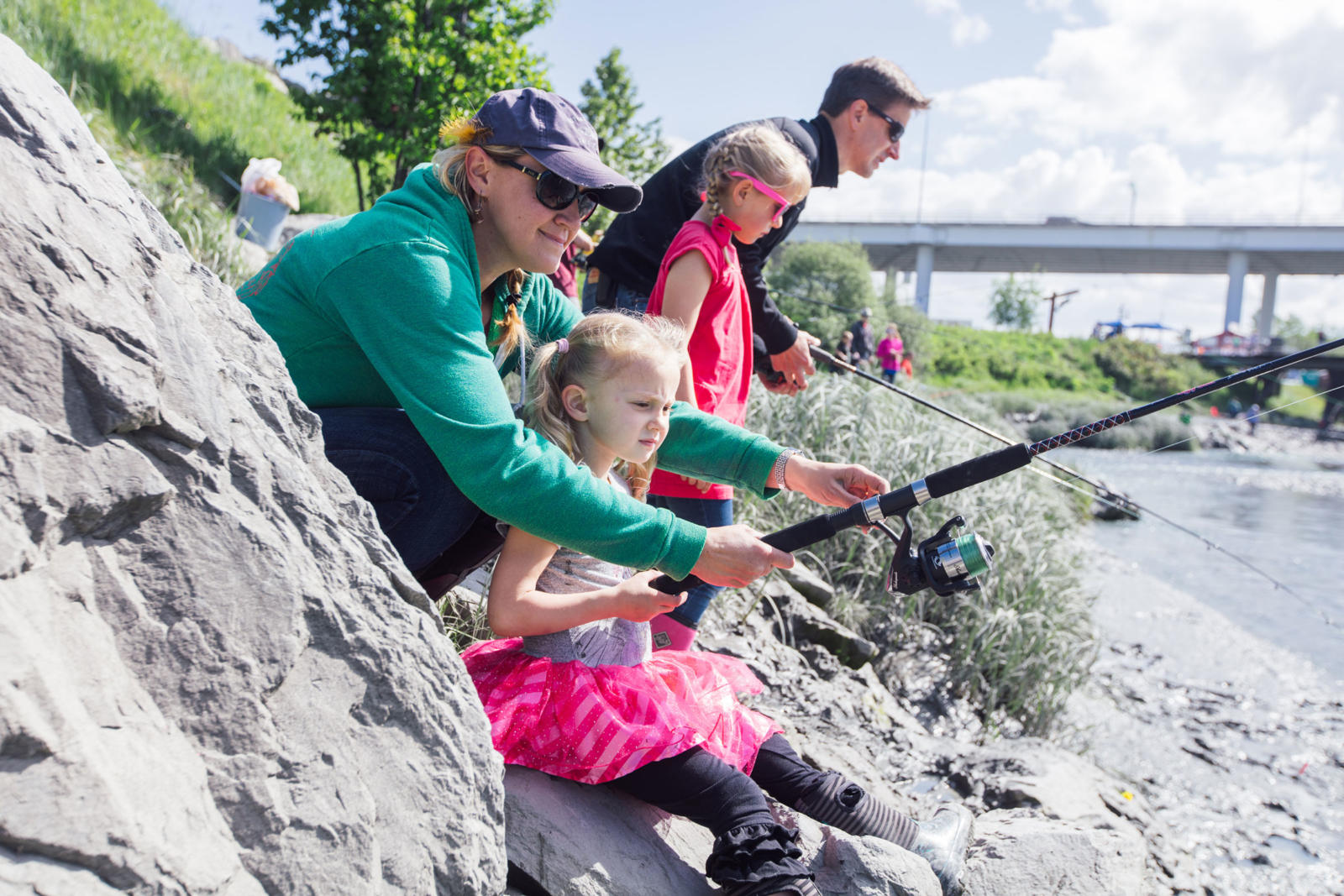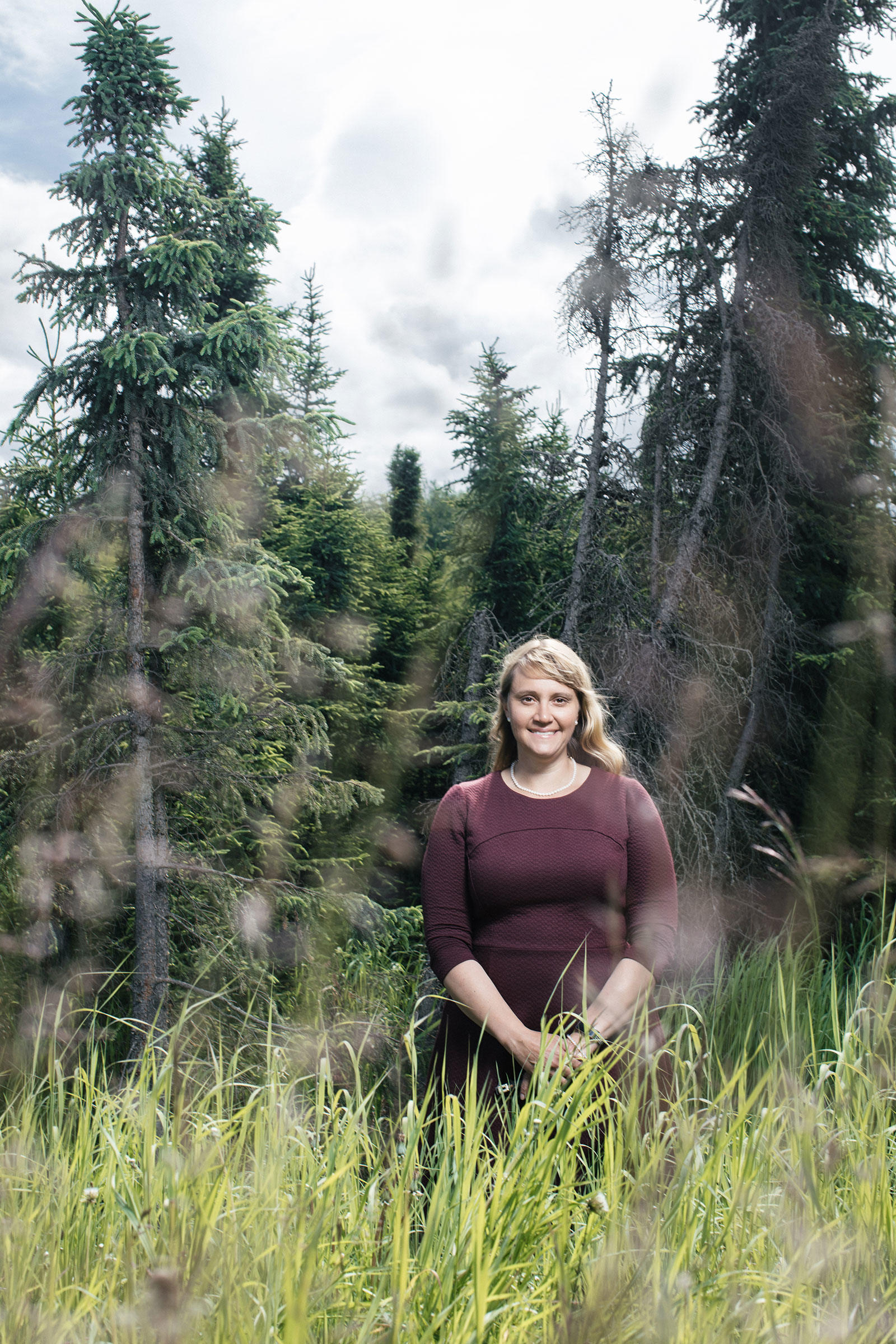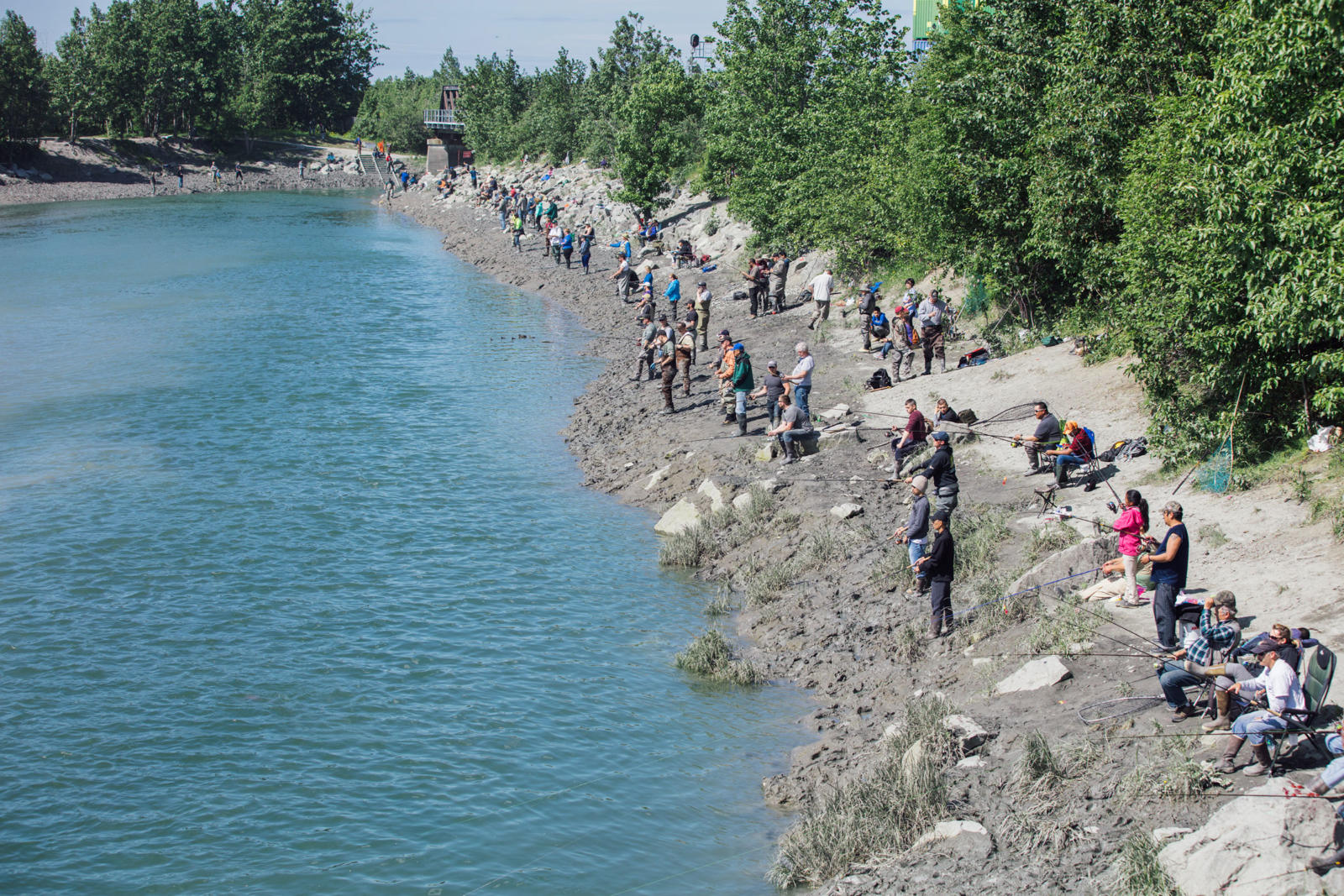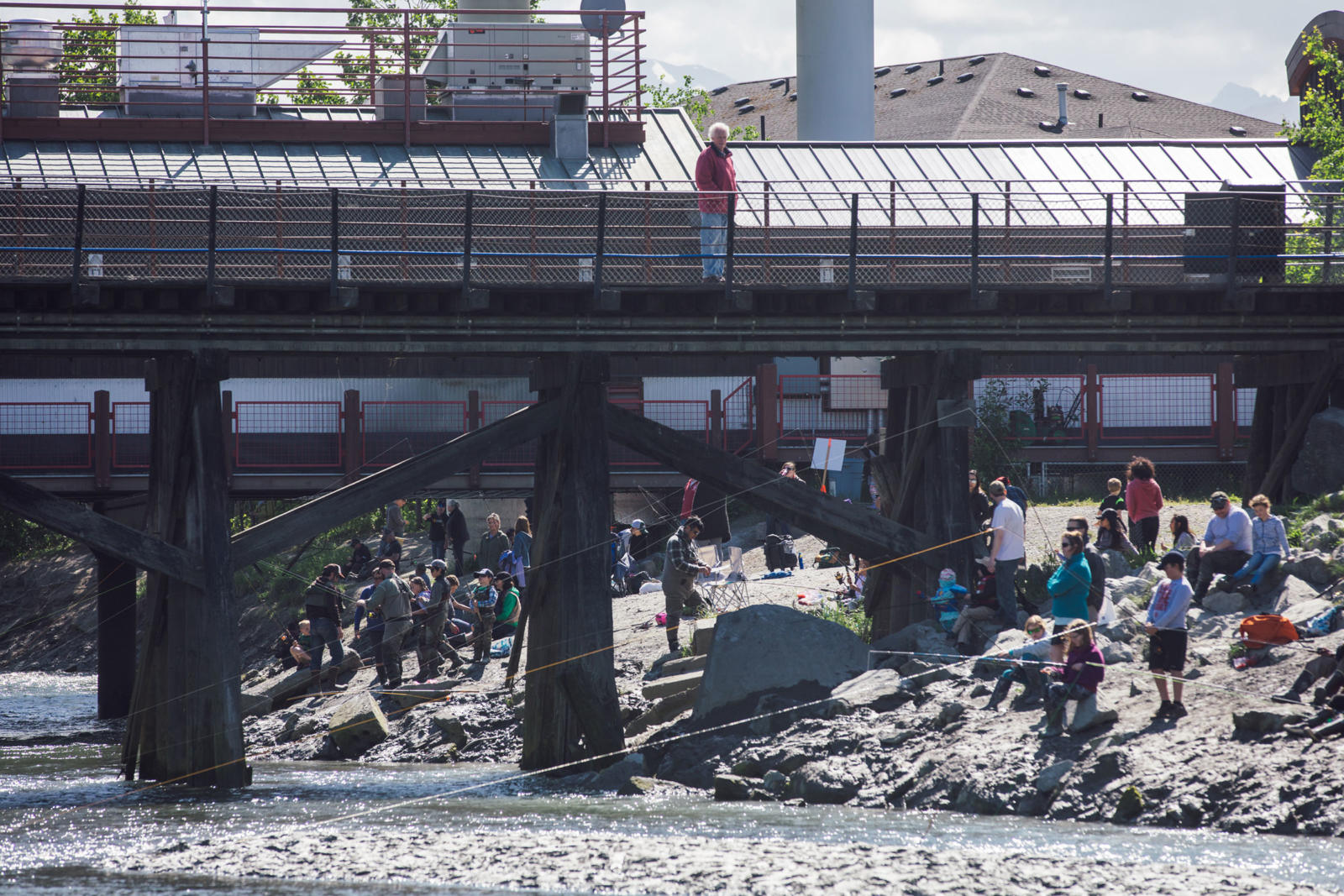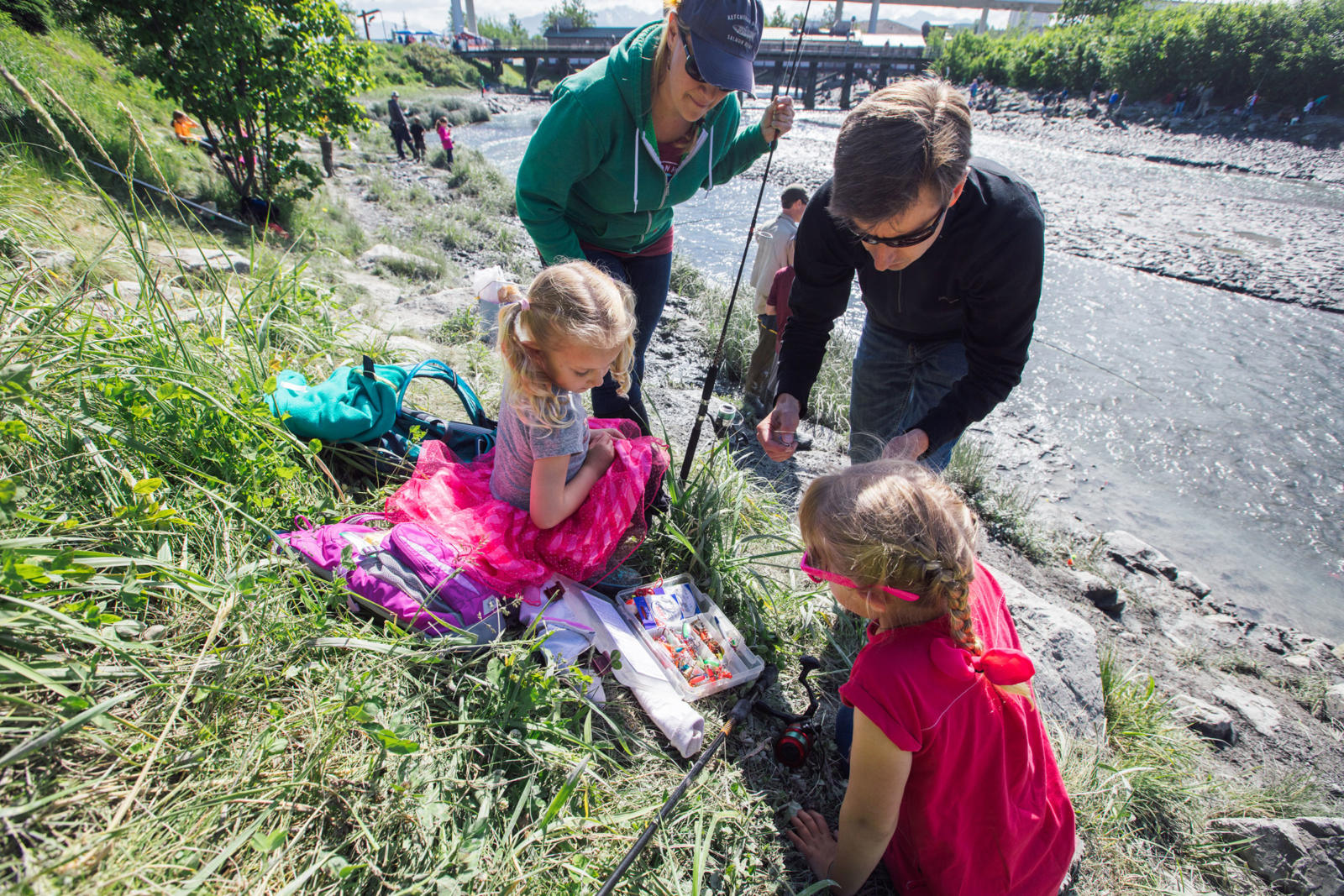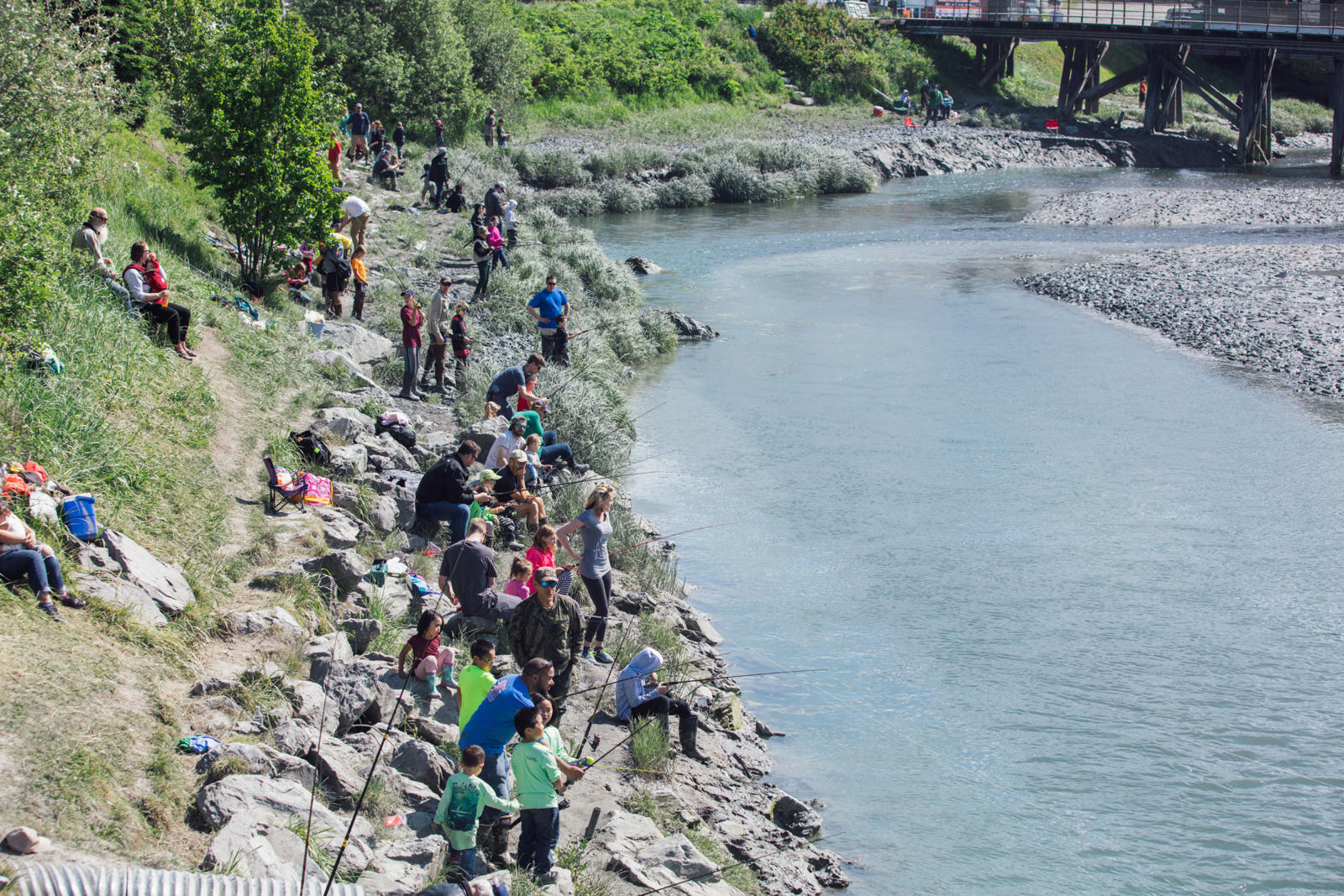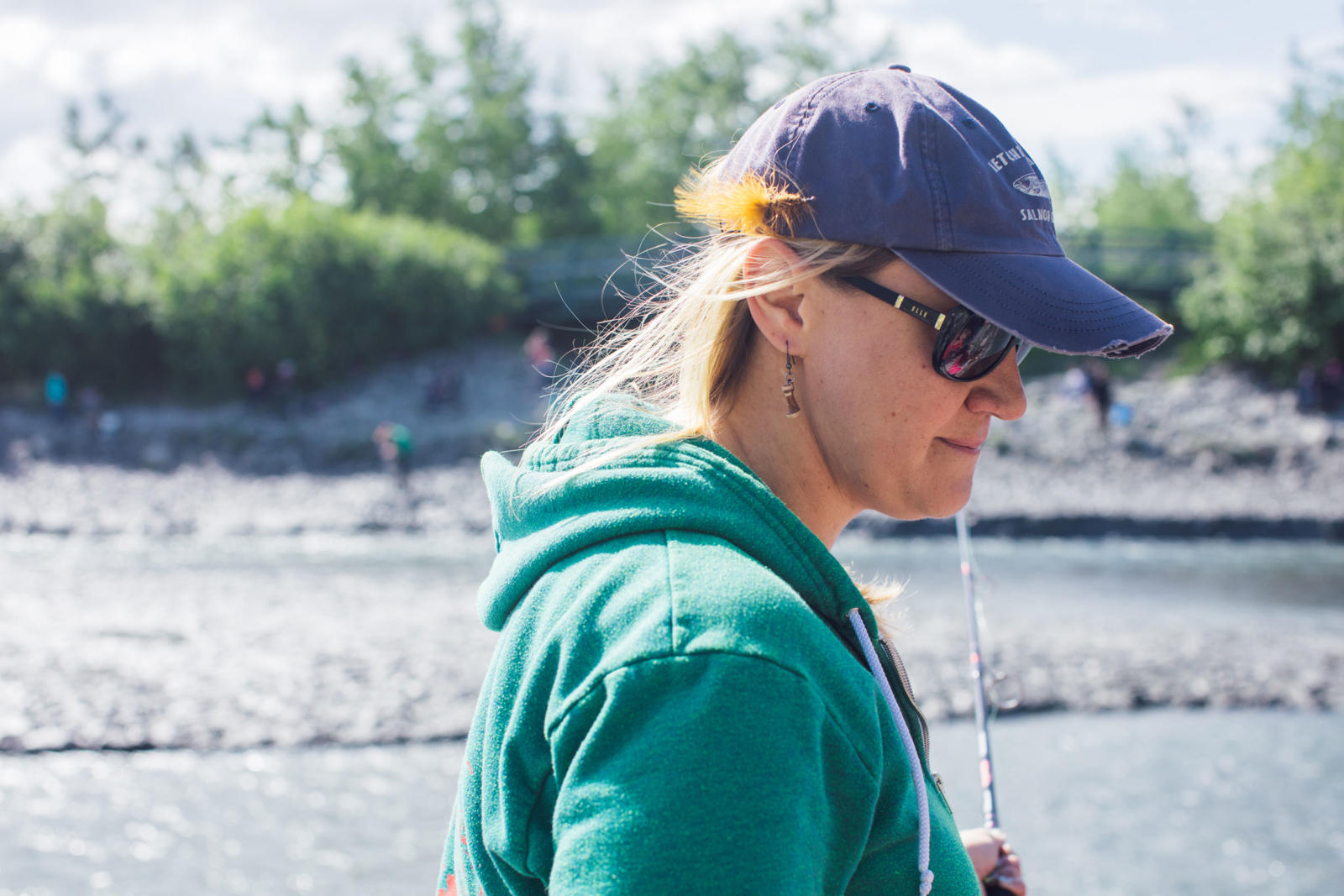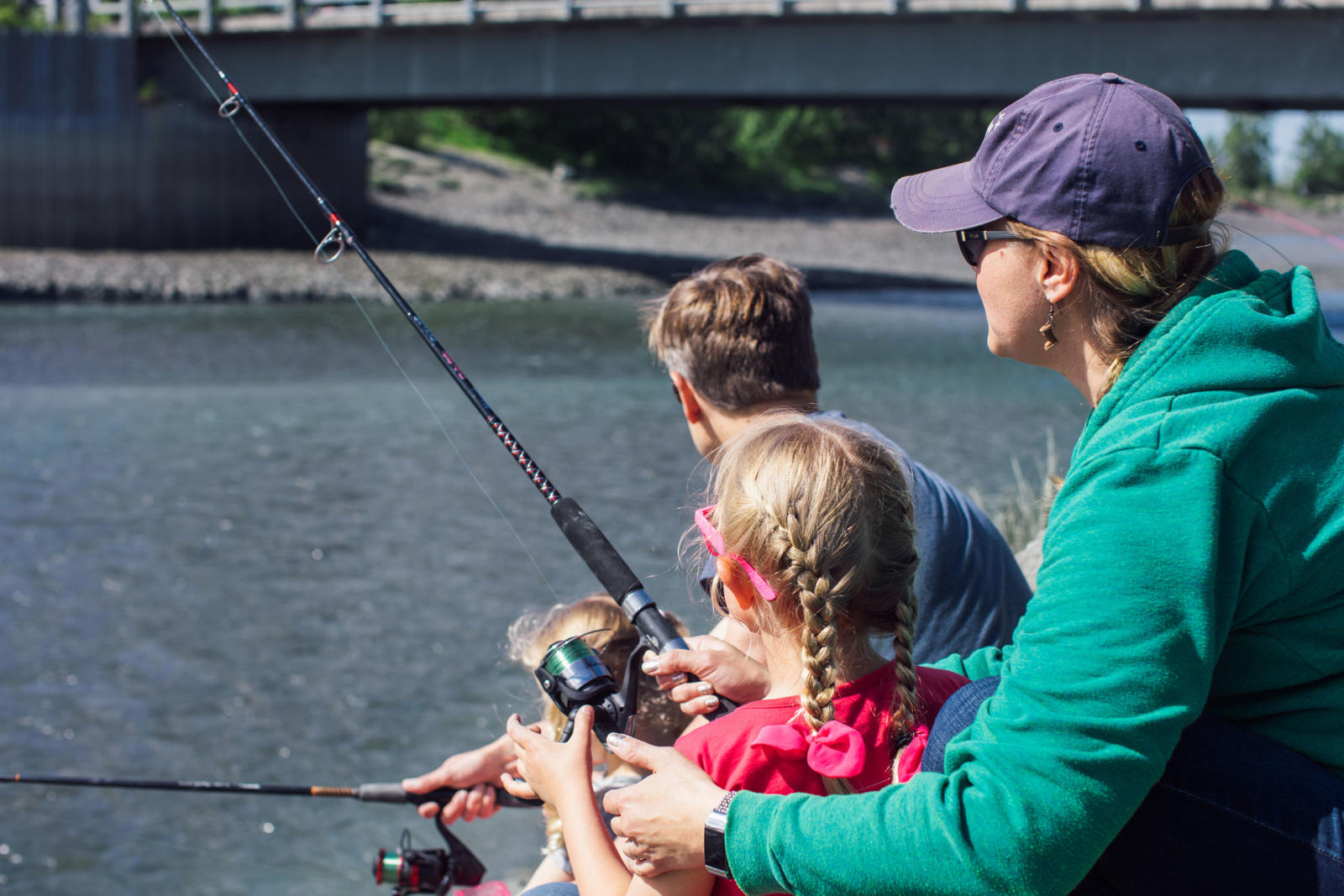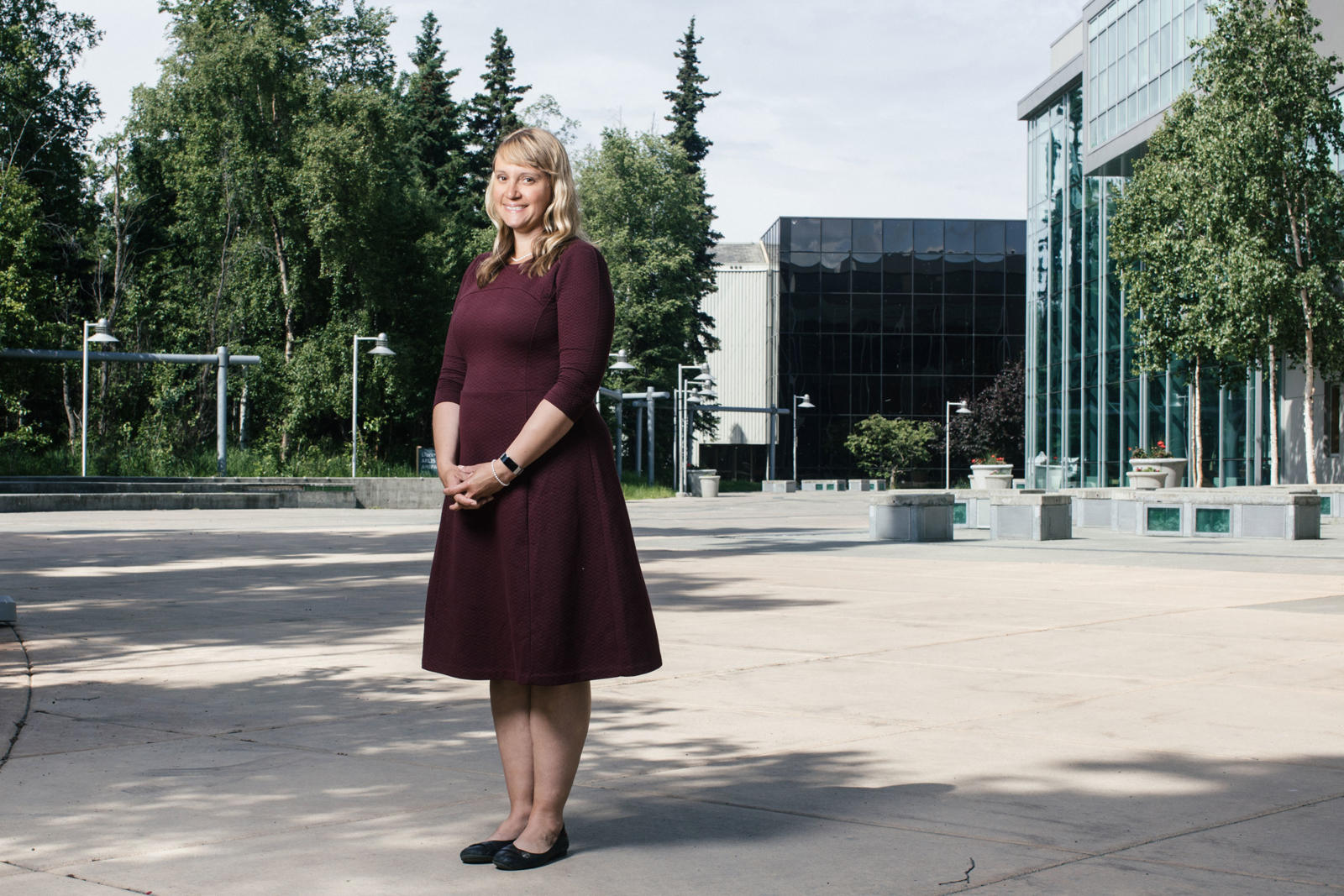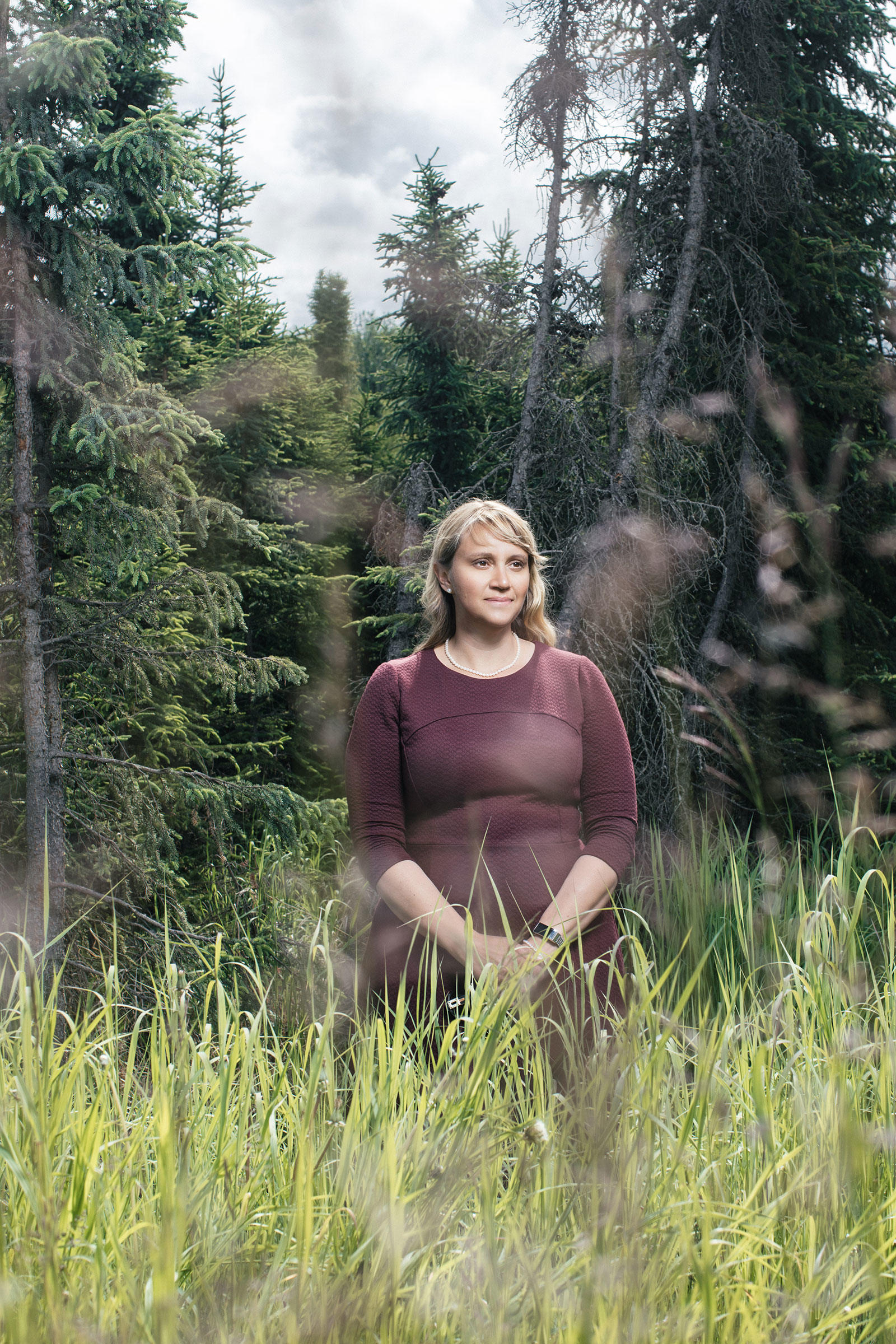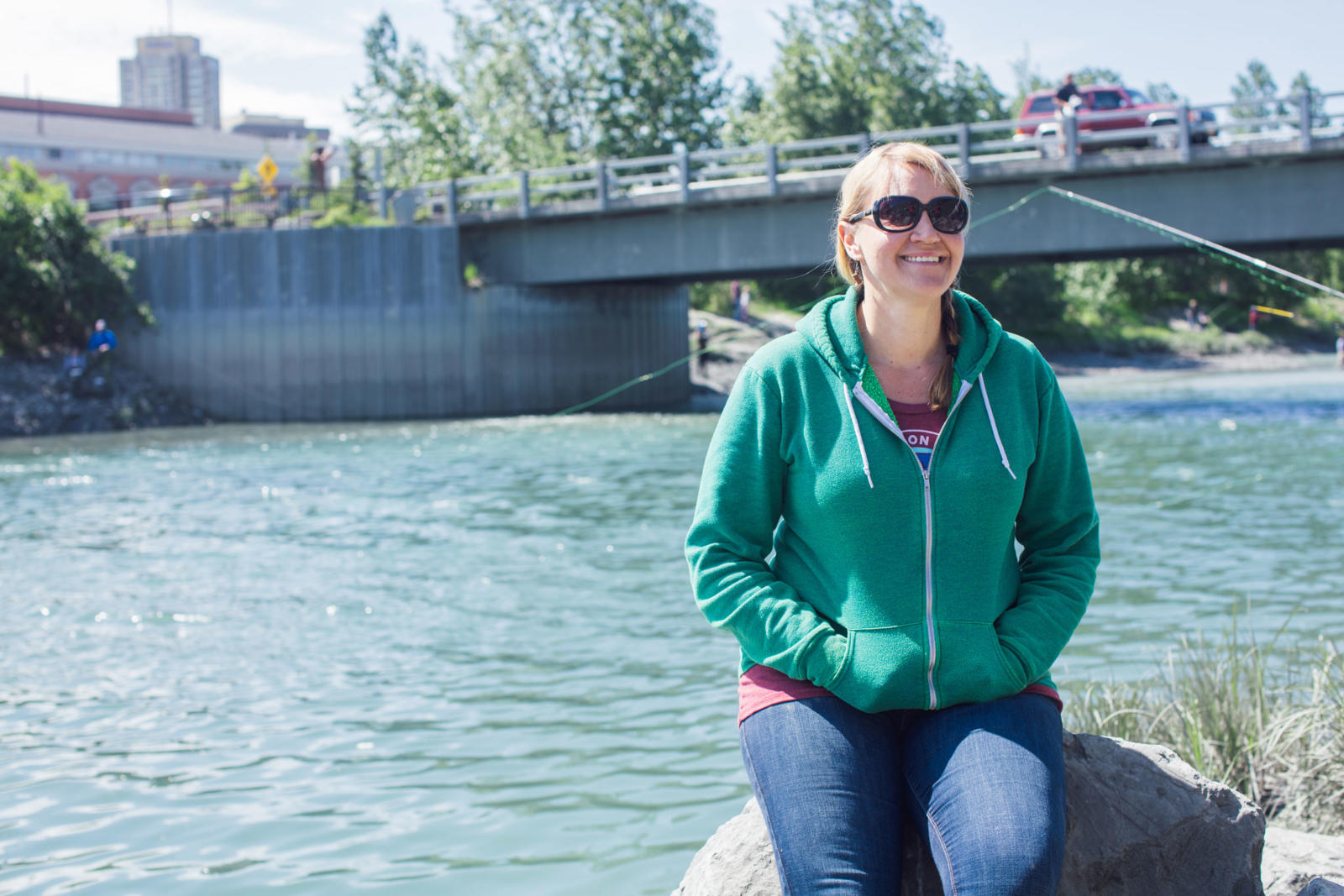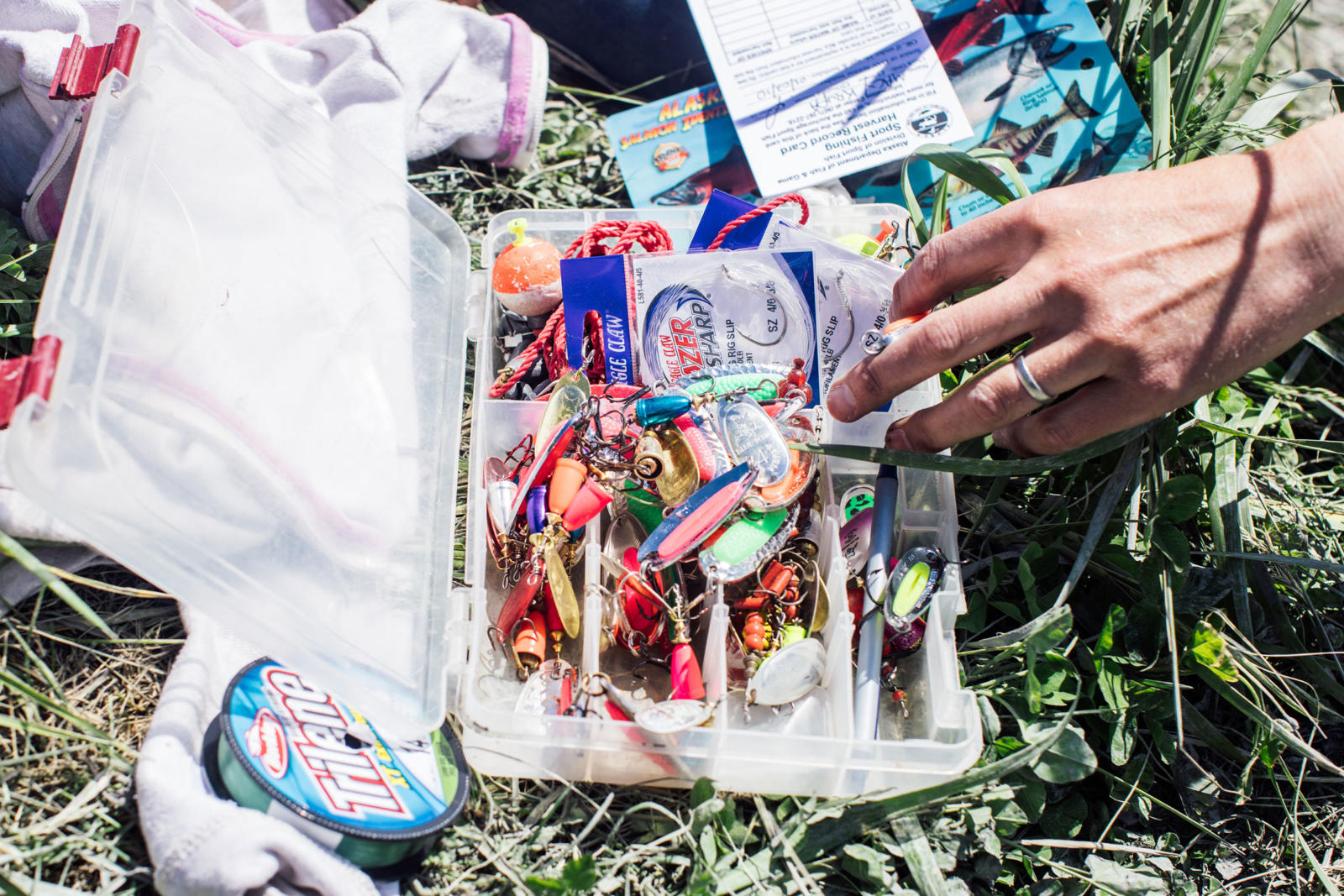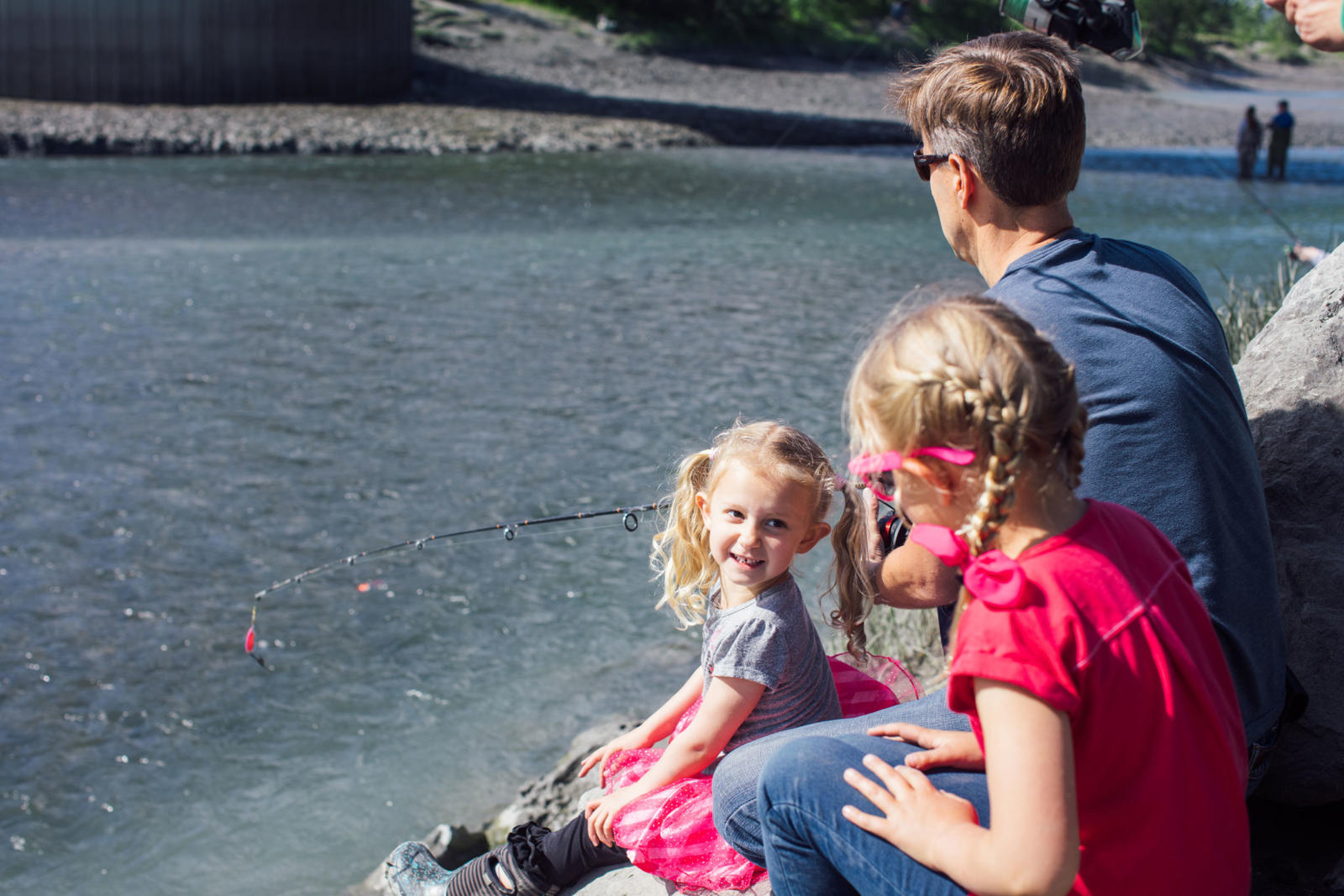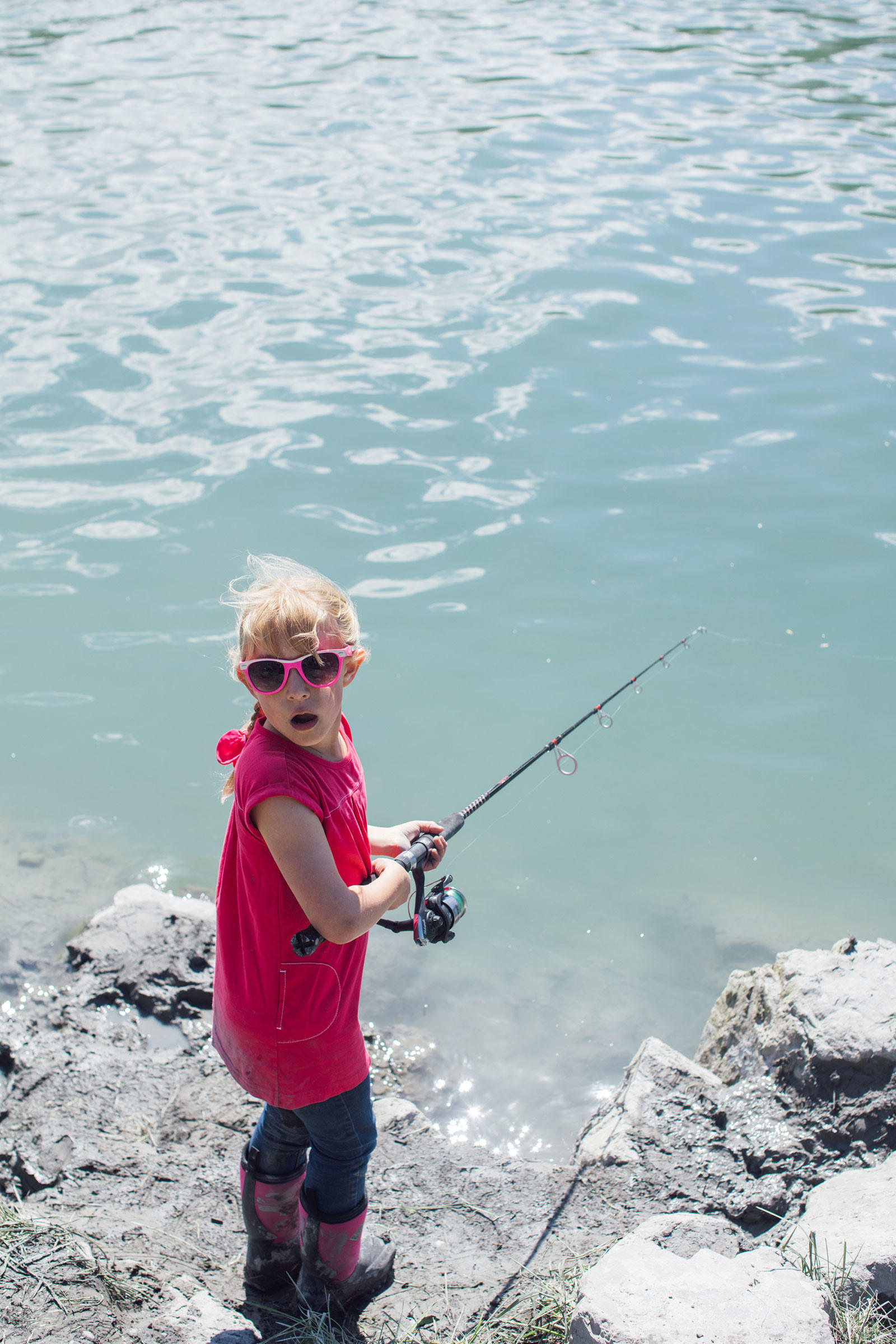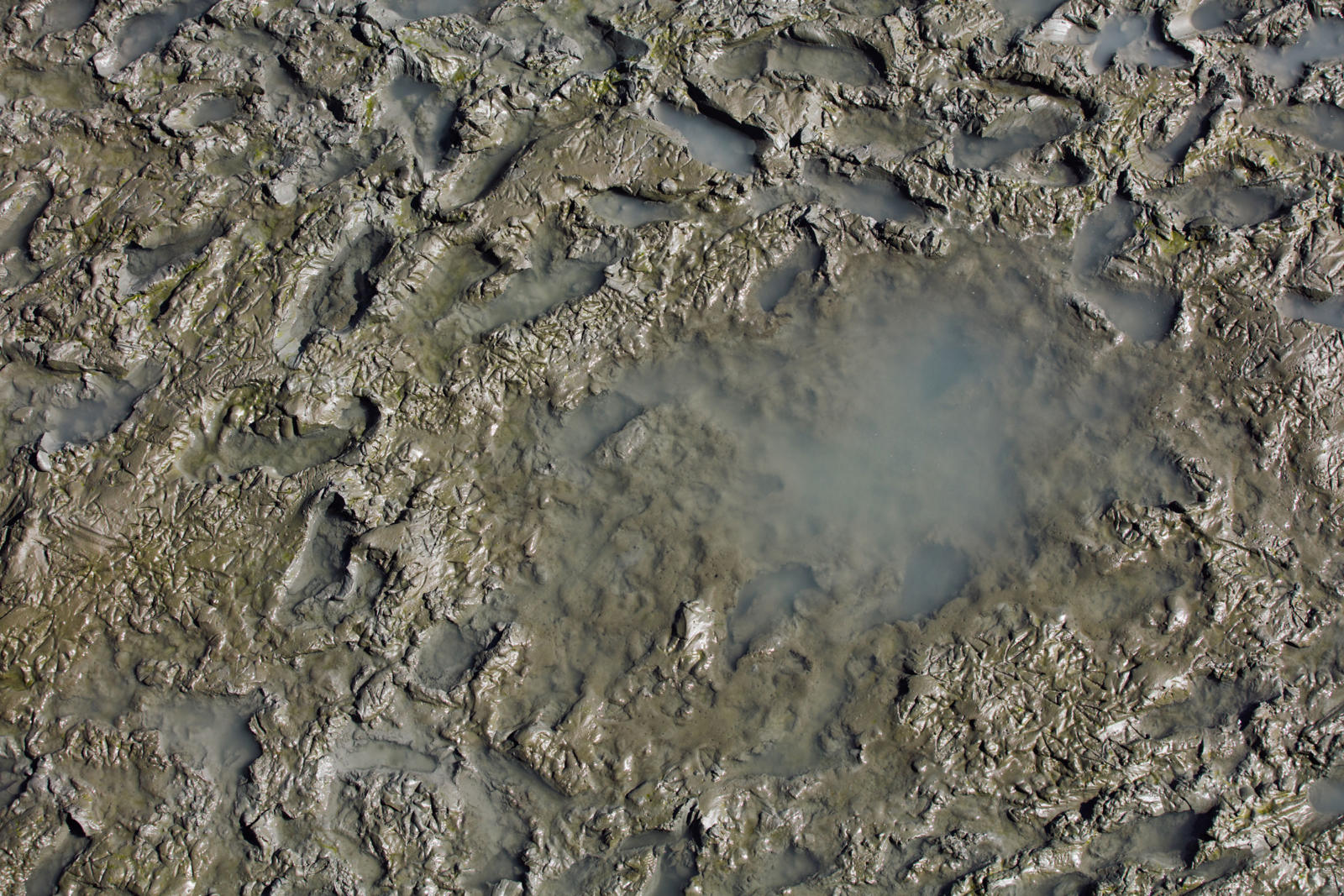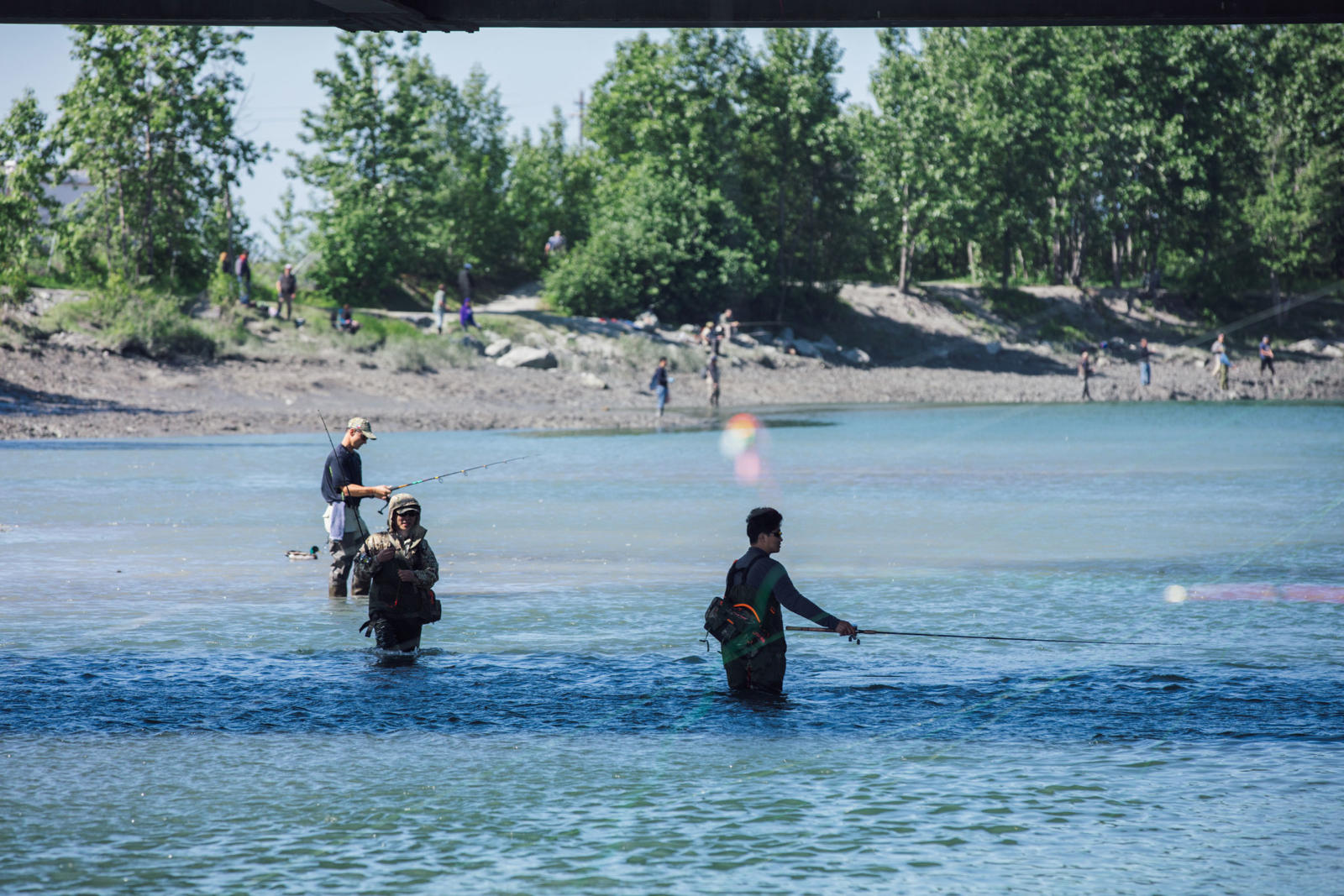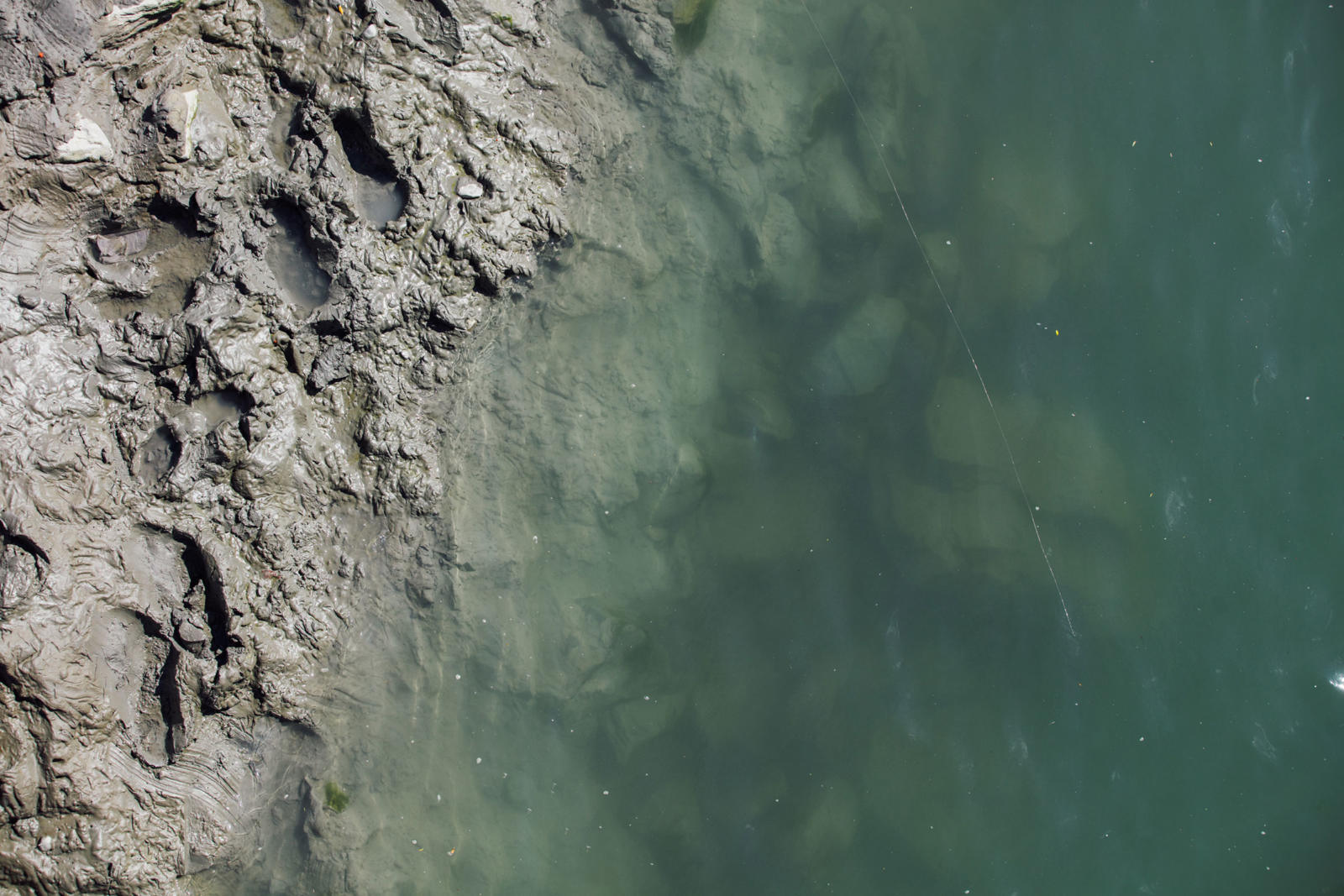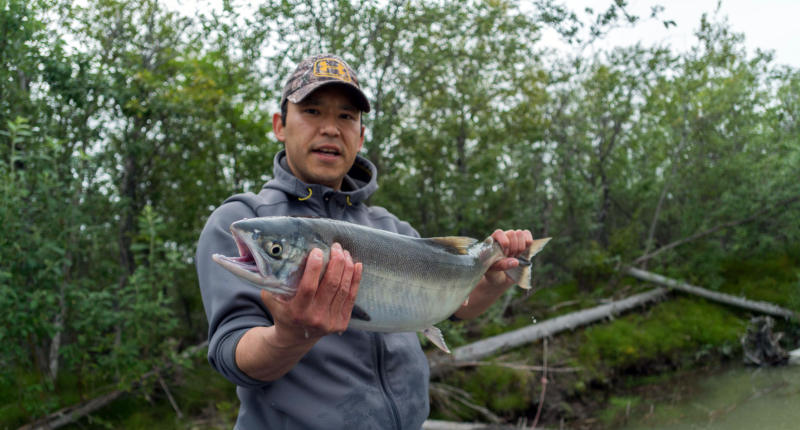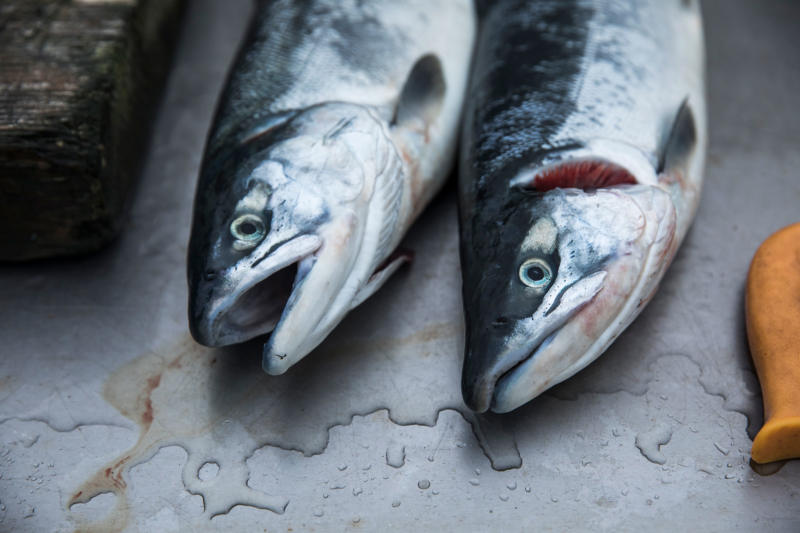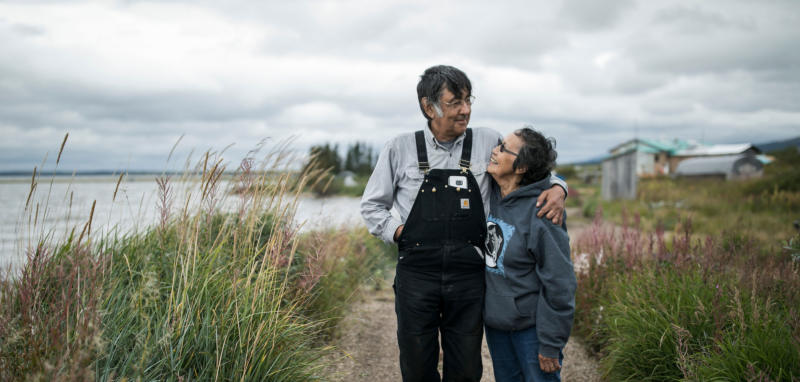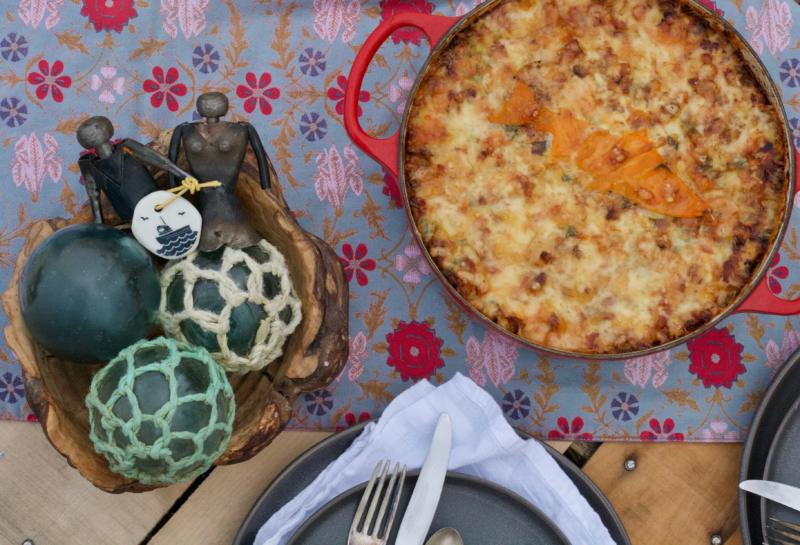Only one downtown in the world offers a place to catch king salmon on your lunch break. For Dr. Meagan Krupa, who has spent years studying this fishing hole, catching kings in a city is pretty amazing. But the fish that swim past skyscrapers today don’t tell the whole story.
Ship Creek in downtown Anchorage has evolved. The first tent sites for the railroad marked the location where the biggest city in Alaska would eventually grow. Only one hundred years ago when the city was new, all five species of Pacific salmon lived in Ship Creek. With wonder in her voice, Meagan reveals details learned while working toward her PhD dissertation about this ancestral home of salmon.
